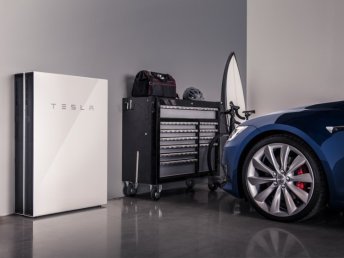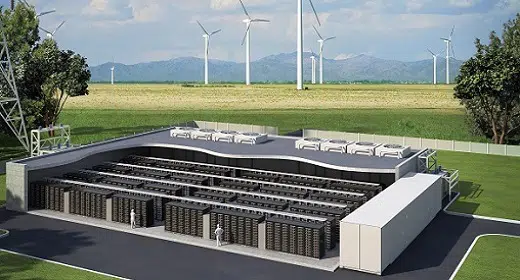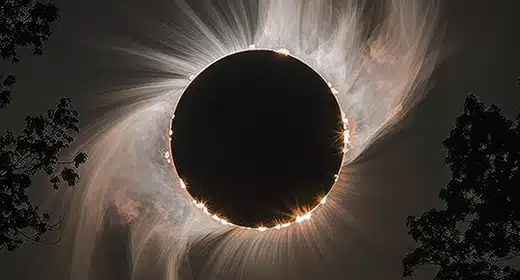Renewable energy technologies play a major role in mitigating pressing societal challenges such as climate change and resource depletion…
Among the many renewable energy technologies, solar photovoltaic (PV) power and wind power have a particularly large potential for electricity generation due to their wide applicability and high efficiency. However, despite the many advantages, there remain major barriers that obstruct a more widespread implementation of grid-tied solar PV plants and wind power. As a result of the dependence of PV panels on solar irradiance, solar energy generation is only limited to daytime, depends highly on local weather conditions and fluctuates strongly over the course of the year. Moreover, the energy generated by wind turbines has a similar fluctuating nature due to its strong dependence on local wind speeds. This irregular generation of renewable energy is changing the dynamics of energy supply and demand and requires new innovative approaches for energy companies to stay on track.
Intermittency in the energy mix
Until now, because there was simply no efficient technology to store energy, most grids have been built on the just-in-time principle, in which energy is generated and almost instantly transported to the end user. Therefore, grid-operators cope with the intermittency from renewables by forecasting future load and including fossil fuel electricity generators to adjust to sudden rises and falls in the output from renewable energy. During this process, the electricity produced by generators is continuously increased and decreased, which is very inefficient and often results in an increase in emissions per kWh produced. Because, over the past decade, the portion of renewably generated energy in the energy mix has significantly increased, it has become much harder for grid-operators to foresee fluctuations in the total energy supply. Moreover, since renewable energy is on the rise and expected to become more dominant in the energy sector, some warn that its intermittency could eventually pose a serious threat to the stability of our electricity grids. In addition, energy companies are forced to deal with a larger number of small-capacity energy units, as a result of decentralized energy production from renewable energy and solar PV panels in particular.
The potential of energy storage
So are there any solutions to the upcoming threat from renewables to our power grid stability? According to Dunn et al (2011), energy storage would be very effective at smoothing out energy flows and balancing out electricity supply and demand. They argue that the storage of energy decouples the generation of energy from the supply of energy and therefore adds a time dimension to the picture. As can be seen in figure 1, whenever the solar supply is higher than the grid demand, energy storage could effectively store the excess energy for later use. In addition, it would enable energy companies to use the energy storage as a buffer and to only produce electricity when generation costs are lowest.

Figure 1: This figure displays the benefit of energy storage of saving excess energy for later use. Source: https://www.renewableenergyworld.com/articles/2011/11/solar-intermittency-how-big-is-the-problem.html
Batteries are the answer
Over the past century, engineers have come up with different technologies to store energy after generation. However, apart from pumped-storage hydroelectricity, many have not been implemented on a large scale due to problems concerning scaling, price, and implementation. Recently, battery storage systems have been recognized to have a great potential in improving energy grid stability. While battery storage had always been too expensive and impractical for actual implementation in energy grids, the use of battery storage is becoming more and more attractive, as a result of lower product prices, smaller battery sizes and higher efficiency rates. Apart from this, batteries are known to have a lot of desirable features, since they have a long cycle life and low maintenance costs. Over the past decade, the price per kWh of lithium-ion batteries has even shown such a rapid decline, that innovative companies such as Tesla are currently producing battery storage systems for residences at competitive prices, while others are manufacturing gigantic storage systems capacities of 20-50 megawatt.

Figure 2: Tesla’s revolutionary commercial home battery system: the Tesla Powerwall. Source: http://www.businessinsider.com/tesla-selling-powerwall-solar-panels-home-depot-may-help-business-2018-2
Increased flexibility with smart grids and battery storage
While the application of battery storage in our electricity grids by itself is very promising, it will have an even more important role in reaching the full potential of so-called ”smart grids”. While battery storage systems will slowly be implemented into our energy grids, smart management of electricity flows will become more and more important and will ultimately dominate the power network as it seeks to minimize costs and optimize the efficiency of power transport. Power will no longer flow in one direction from the energy company to the consumer, but instead will be highly dynamic, as computer-generated algorithms determine the flow of energy. In this process, it will be essential that the widely dispersed grid-connected battery energy systems are accessible to these “smart” systems, as they can collectively be treated as one big resource to fuel their applications. The use of batteries in “smart” systems is demonstrated in a recent research by the University of Delft, where they use charging algorithms to use electric vehicle (EV) batteries for storage and are able to optimally charge EV’s based on EV user requirements, distribution network constraints, energy prices, demand for ancillary services and solar forecast information.
Conclusion
While this all may sound a bit futuristic, the technology regarding battery systems is advancing faster than we think and will be key to working around the intermittent nature of renewable energy. Especially in combination with smart grid technology and the use of advanced meters for data collection, battery systems could enable a more flexible grid with interconnections between different energy users, energy companies and perhaps even countries. This will be essential in building up a sustainable and renewable energy dominated power system.




















































